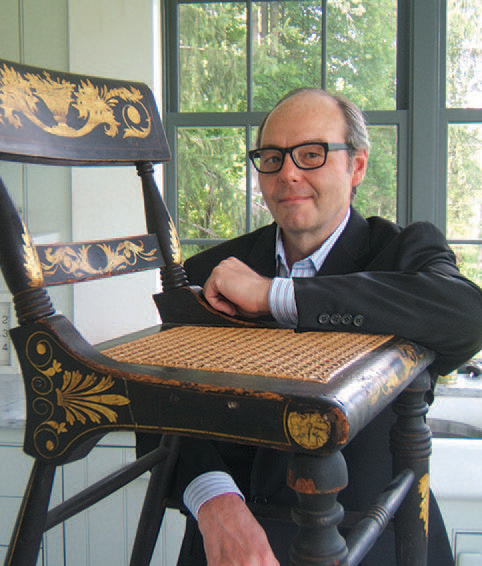
Shortly before our press deadline for this issue, a startling news report came out of Charleston, South Carolina: the Historic Charleston Foundation (HCF), the city’s leading historic preservation organization, had decided to sell the Nathaniel Russell House, one of its two celebrated Charleston house museums and one of the grandest historic houses in the country. The brick neoclassical residence, built in 1808 for a wealthy Rhode Island–born merchant and slave trader, is a designated National Historic Landmark and is regarded as one of the architectural treasures of Charleston—not least for its magnificent “free-flying” staircase, which spirals up three stories in height without bracing or other structural support. With the help of grants and donations, the Russell House has been filled with an impressive collection of period furniture and art—all of which will also be sold.
The news—first revealed on the website of the Charleston Mercury newspaper, which published photos of a leaked internal HCF memo outlining the organization’s strategic planning—provoked an immediate outcry on social media, with most commenters decrying the decision as a breach of trust. Historians and preservationists were particularly dismayed by the notion that one of the shining examples of the work they do might end up out of public view and in private hands. “I can’t wrap my mind around a decision to sell the Nathaniel Russell House. It is an icon,” Robert Leath, executive director of the Edenton [N C] Historical Commission, told me. “It served as the foundation’s headquarters for nearly forty years and many of the city’s most important preservation decisions were made in [longtime HCF director] Frances Edmunds’s third-floor office. I can’t imagine how disappointed she would be with this concept. It was the Historic Charleston Foundation’s flagship.”
For its part, the HCF responded with a social media post explaining the move. While acknowledging the “difficult decision” to sell the house, the foundation argued that the “issues facing our city today have changed significantly since the [Russell] house was purchased, and our work of operating it as a museum house is no longer core to our mission.” That mission, as detailed in the memo published by the Mercury, will include a focus on advocacy for land development that mitigates the effects of sea level rise and increasingly violent storms—an acute concern in low-lying Charleston—and augmenting newly established funds that help historic-district residents keep and improve their properties and allow historically Black churches in the district to remain viable. As to fears that some freewheeling new owner might, say, install a roof bar with disco lights, the HCF wrote: “We will ensure a proper and deliberate transition of the property with comprehensive easement protections and the highest level of care.”
I have a deep affection for the Russell House, which was the setting for a personal epiphany not long ago. As our consulting editor Eleanor Gustafson described in her July/August 2020 Endnotes column, the HCF’s emphasis in historical interpretation of the Russell House had evolved in recent years—away from telling the story of Nathaniel Russell and his family and toward examining the house as a paradigm for domestic arrangements in the antebellum South, within which the free and the enslaved lived decidedly different lives.
I was unaware of all that when I made my first visit to Charleston, nearly four years ago. After dropping my bags at the hotel, I trudged down Meeting Street through a cold, steady rain, past the stately spire of St. Michael’s Church, to the Russell House. I mainly wanted to see the famous free-flying staircase. I did, and it was marvelous, as were the other splendors of the house. The tour concluded with a stop at the archaeological dig in the rear wing, which had once housed the kitchen and laundry, with servants’ quarters on the second floor. The docent, a woman of middle age, explained how bits and pieces found beneath the floorboards had revealed much about the daily life of the enslaved who cooked, and cleaned, and served—as many as eighteen people, who all slept on the floor above.
I will never forget how that docent’s voice quavered and eyes seemed to well as she said of the enslaved: “For years we never mentioned them, and they made all this possible.” At that moment—with a feeling not very unlike shame—I realized that I had not thought as much as I should have about the enslaved who lived and worked in places like the Russell House. Nor, I came to see, had the magazine I edit. As I wrote in an editor’s letter later that year: “Certainly over the decades our magazine has contributed to the mythmaking, at least by sins of omission—publishing articles about great houses that spare not a thought for the enslaved who toiled in and around them, and in many cases built them.”
So I hope that some resolution can be reached—another preservation group takes over? An unexpectedly altruistic and civic-minded billionaire buyer emerges?—that permits continued public access to the Russell House. I would hate to see others deprived of an opportunity to learn the complete story of America’s past—and, perhaps, a little about themselves.


